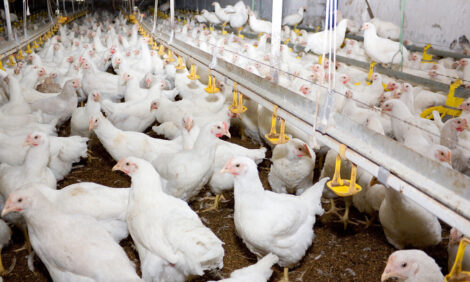



Ag Economist Offers Insights to Latest US Farm Bill
US - A Purdue Extension agricultural economist has published two articles that include analysis of what the 2014 Farm Bill could mean for farmers and agriculture in the Midwest.The articles, "What Will the 2014 Farm Bill Mean for Midwest Agriculture?" and "Beginning to Evaluate Choices in the Farm Bill," were authored by Roman Keeney and are available for download free of charge in the most recent edition of the Purdue Agricultural Economics Report.
The bill, formally named the Agriculture Act of 2014, was signed into law on 7 February but many of the law's specific rules are left to the US Department of Agriculture to interpret and implement. And while the new programs outlined in the bill will apply to the 2014 crop, Dr Keeney said it is likely sign-ups won't be available until late in 2014.
In his articles, Dr Keeney explains the ways the farm bill has changed agricultural policy, outlines the new farm revenue protection programs and helps farmers start to evaluate their program decisions.
"The new farm bill is a major overhaul of commodity policy in the United States," he said. "The articles provide an overview of those changes, introduce some of the decisions farmers will be making, and considers the continuing evolution of US agricultural policy."
One of the biggest changes farmers will see is the elimination of the longstanding direct and countercyclical payments system. Instead, lawmakers decided to offer farmers a more robust insurance and revenue protection system.
Part of what makes farmers' revenue protection program decisions so important is that farmers are locked into their enrollment decisions for the five-year life of the farm bill, which runs through 2018.
The programs they will be offered:
- Price Loss Coverage (PLC), a price protection program that triggers payments when market year average prices fall below target levels, which are called reference prices.
- Agricultural Risk Coverage County (ARC-C), a revenue protection program that triggers payments when the county revenue per acre falls below a benchmark revenue guarantee per acre set for the county.
- Agricultural Risk Coverage Individual (ARC-I), a revenue protection program that triggers payments when there is a revenue-per-acre shortfall on the individual farm that falls below a benchmark revenue guarantee per acre for that farm.
The decision is more in-depth than just selecting a program per farm. Farmers will be able to enroll different commodities into different programs. There also are some additional options available with all three programs - all highlighted in Dr Keeney's articles.
The USDA is expected to have the remainder of the farm bill rules interpreted this summer, giving farmers time to learn more before they enter the enrollment period later this year.









